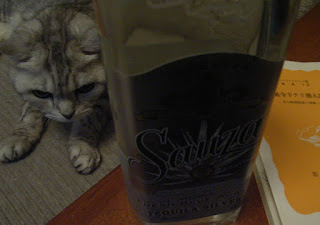Happy nudes and angry comrades
By Satoru Nagoya
Since Shintaro Ishihara, a writer-turned-politician widely regarded as a nationalist with macho inclination, was elected as Tokyo’s new governor, some people may think that a stronger, more self-supportive attitude will emerge in Tokyo and its art world. I am one of those anxious for such positive change. Nevertheless, what I have seen in the Tokyo art scene recently is more of a feminist outcry.
Last year a debate over feminist art heated up in a Japanese-language art magazine named “LR.” The debate erupted between a male senior staff art writer of a major vernacular daily and the coalition of a female museum curator and a university professor (also female). The museum curator had organized an exhibition on how the weaker sex has been represented in art history at her prefectural museum in the northern Kanto area, and the professor – an expert in Italian art history at a national university near Tokyo – is known for feminist, leftist stance.
The female protagonists contended that women have long been oppressed in a male-controlled society; in male-dominated art history too, women were no more than nude objects exploited by male artists and their audiences. To do justice, exhibitions should continue to examine this topic today. The feminists’ male opponent maintained that, in Japan, such a view is no more than an import from the West, where feminist theories were born. Feminist curators in this country are just copying Western textbooks. And if the senior staff writer says artworks bearing feminist manifestations often lack formative quality, the feminist contenders would assert that Formalism – or its mother, Modernism – is also a product of a male-oriented culture that has put a limit on female expression.
I don’t wish to judge who’s right here. However, the ongoing large-scale exhibition of Nobuyoshi Araki at the Museum of Contemporary Art Tokyo (MoT) provides some very interesting hints as to whether such feminist claims are relevant or not. In the exhibition, entitled: “Sentimental Photography, Sentimental Life,” the renowned photographer is showing his trademark nudes and other kinds of work, including photographs of colorful flowers. Araki is rather notorious among some women and often a target of feminist attack. They claim that in his nude images (most of them with explicitly erotic atmospheres) the photographer debases women and exploits the female sex.
If their claim is true, however, what about those young women who pose so delightedly in the photographer’s works? Many of them are ordinary girls who seem to be happy with the opportunity to become models for Araki. They do not seem to feel “debased” or “exploited” – having become nude models of their own free will.
The exhibition also reveals that Araki, whose works (until five years ago) caused police to raid galleries on suspicion of “exposure of obscenity,” is no longer an enfant terrible who challenges public order. He has evolved into a wise artist who prudently avoids any confrontation with authorities or with dangerous people. The works on show at MoT include a shot of right-wingers waving Hinomaru flags at the Imperial Palace to offer congratulations to the Imperial family at New Year’s. This photo, however, is carefully separated from the photos of nudes. There are no shots explicitly showing any sexual acts. (Japanese police accepted exposure of pubic hair a long time ago, but they are still nervous about showing genitalia and sexual acts.) Above all, the exhibition is cosponsored by the publisher of the Asahi Shimbun, the newspaper regarded as Japan’s champion of good sense.
In the exhibition catalog, MoT’s chief curator Junichi Shioda says: “Araki’s photographs are like a mirror, reflecting the reality in which we live. This includes Tokyo, a city of obscene energy and inhuman emptiness.” Admittedly, Tokyo has many obscene aspects, but is Shioda the kind of man who spends most of his night life in Kabukicho or Yoshiwara? If not, whose “reality” is that?
For anyone who is going to start a battle, it is wise to first consolidate his or her own camp. Before blaming men for exploiting women, feminists should persuade their comrades of the female sex never to pose for Araki – or for any other male artists – so voluntarily and happily; and what about liberating those oppressed female workers of all nationalities in Kabukicho?
The exhibition: “Sentimental Photography, Sentimental Life” continues until July 4 at the Museum of Contemporary Art Tokyo, in Kiba.
Satoru Nagoya is a freelance art journalist in Tokyo.
(June 1999 issue of “Plant,” a Tokyo Journal culture supplement)



